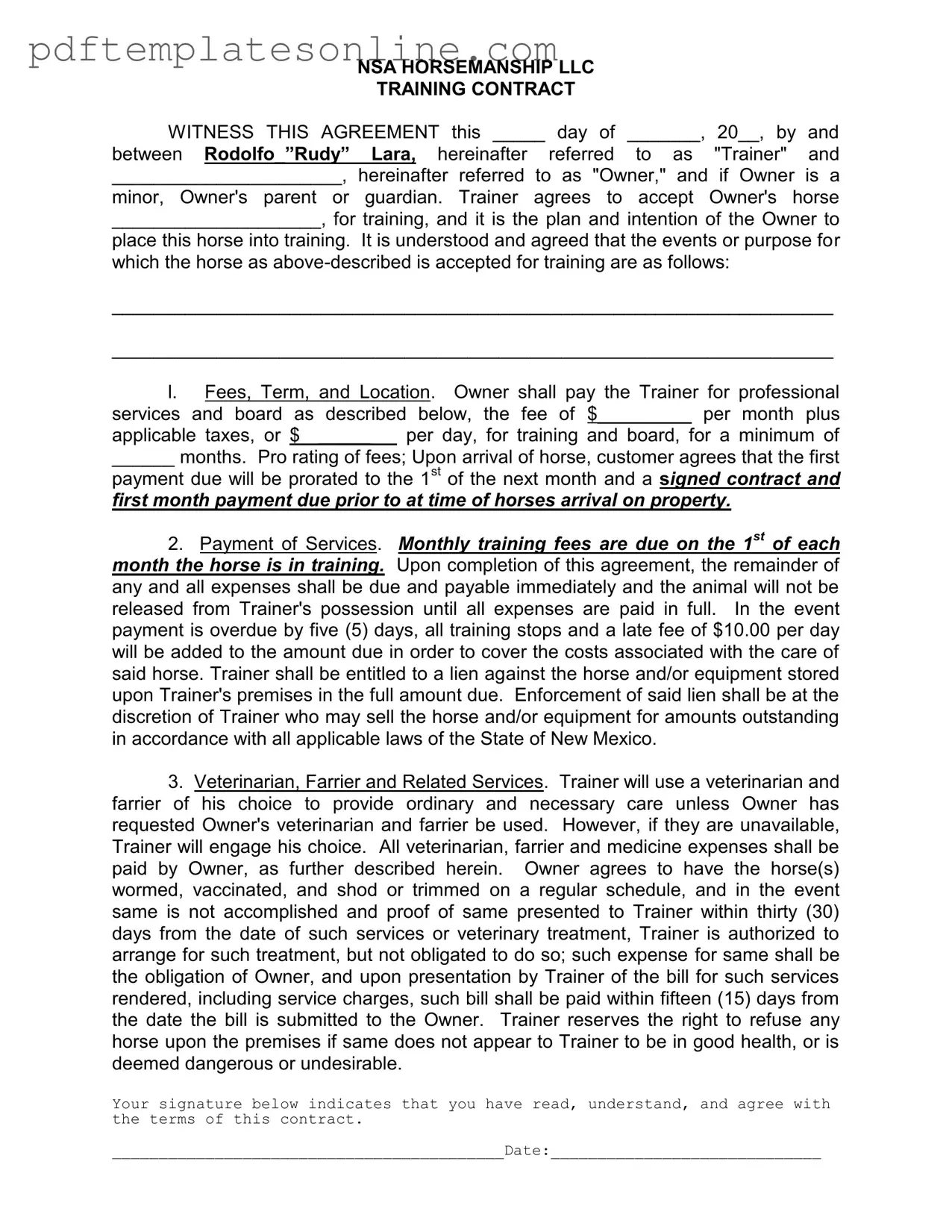Filling out the Horse Training Contract form requires attention to detail. One common mistake is leaving important sections blank. For instance, failing to specify the horse's name or the agreed-upon training fees can lead to confusion later. Ensure that all fields are filled out completely to avoid misunderstandings.
Another frequent error involves misunderstanding the payment terms. Some owners may overlook the requirement for monthly payments due on the first of each month. It's crucial to note that any overdue payments can result in additional fees and a halt in training services. Owners should carefully review the payment schedule to avoid unexpected charges.
Many people also neglect to provide complete contact information. In case of emergencies, the trainer needs to reach the owner promptly. Missing phone numbers or addresses can complicate situations where immediate decisions about the horse's care are necessary. Always double-check that your contact details are current and accurate.
Additionally, owners sometimes fail to disclose important information about their horse. If a horse has any known health issues or behavioral problems, it’s vital to communicate this to the trainer. This transparency helps ensure the horse receives appropriate care and training. Not disclosing such information can lead to complications down the line.
Another mistake is misunderstanding the section about emergency care. Owners might assume that the trainer will always wait for their approval before seeking veterinary assistance. However, the contract states that the trainer can act if they cannot reach the owner. Owners should clarify their preferences regarding emergency care to avoid any surprises.
Finally, many owners forget to review the rules and regulations outlined in the contract. Each trainer may have specific guidelines that owners must follow. Ignoring these rules can lead to issues during the training process. Owners should take the time to read and understand these regulations to ensure a smooth experience.
